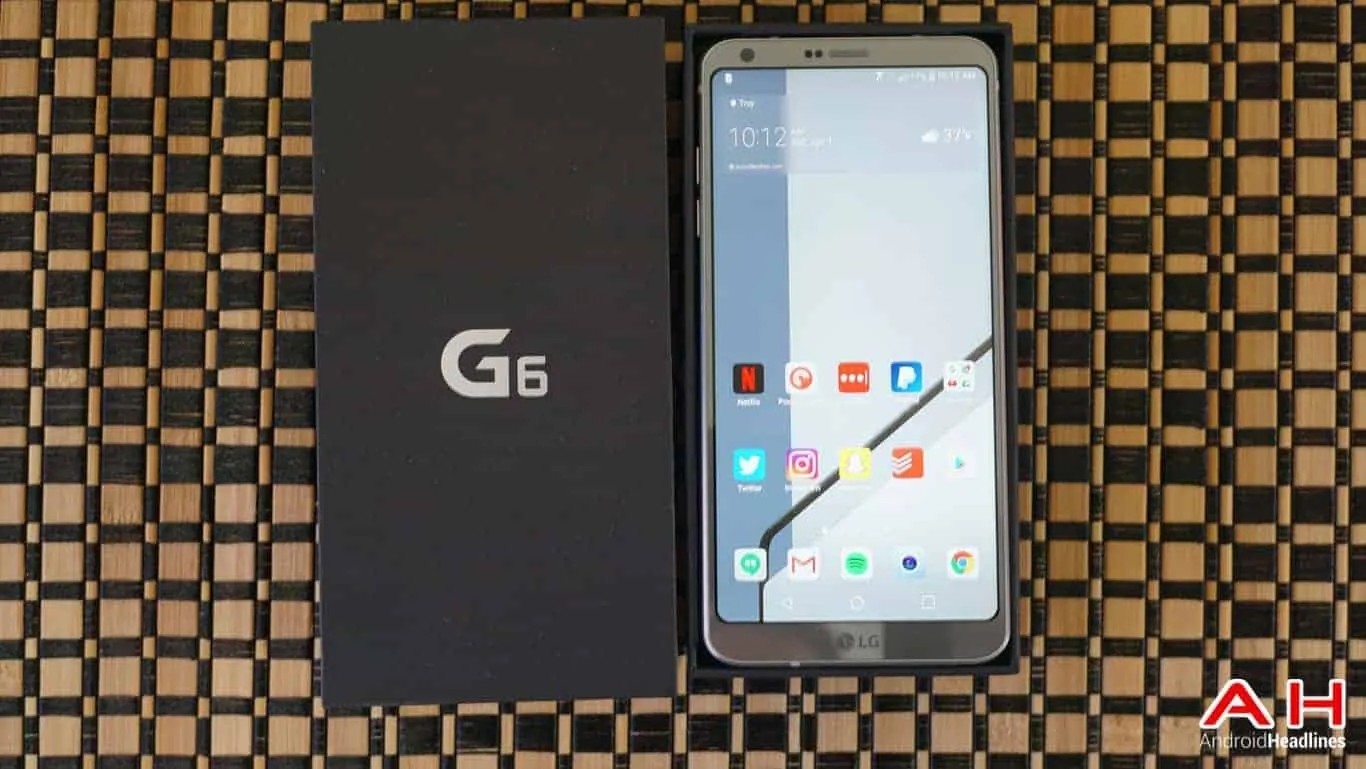Introduction
Today, the LG G6 takes on the Xiaomi Mi Note 2 in a battle that promises to be a fairly close one. Both are premium smartphones from their respective manufacturers and, offer similar hardware for the most part. However, while the Mi Note 2 was launched late last year by the Chinese smartphone maker, the G6 was launched earlier this year by the South Korean company. Both devices are powered by the exact same chipset, offer very similar RAM and storage options, have the same display sizes and are even priced fairly similarly. On paper then, there’s very little between to choose between the two. However, is that also the case in real life? Let’s find out!
Specifications

LG G6

The LG G6 features a 5.7-inch IPS LCD QHD+ (2880 x 1440) display panel with an unusual 2:1 aspect ratio. It is powered by the Qualcomm Snapdragon 821 SoC that has an integrated Adreno 530 GPU alongside a 64-bit quad-core CPU with two cores clocked at a maximum of 2.35GHz and another two running at 1.6GHz. The handset comes with 4GB of DDR4 RAM and either 32GB, 64GB or 128GB of native storage that’s expandable via a microSD card of up to 2TB in capacity.
The LG G6 sports a dual-camera setup on the back, with the primary 13-megapixel sensor paired with an f/1.8 lens that has 3-axis OIS and PDAF and, is supported by a dual-tone LED flash. The additional rear-camera also comes with a 13-megapixel sensor, but it features a wide-angle 125-degree fixed focus lens with an f/2.4 aperture. The two cameras operate independently of one another, and users have the option to choose which sensor to use for any particular shot. On the front, the G6 offers a 5-megapixel sensor that’s mated to an f/2.2 lens. In terms of videos, the rear-facing camera module can shoot 2160p videos at 30fps and 1080p videos at up to 60fps, but the front-facing selfie-cam can only do 1080p videos at 30fps.
The device also comes with a front-facing fingerprint scanner, but unfortunately, does away with the IR Blaster that could be found on its predecessor, the G5. However, unlike G5 that came with a smaller 2,800mAh battery, its successor offers a beefier 3,300mAh battery with support for Quick Charge 3.0, thanks to the Snapdragon 821. The LG G6 measures 148.9 mm in length, 71.9 mm in width and 7.9 mm in thickness while weighing in at 163 grams. In terms of software, the handset ships with Android 7.0 Nougat and is expected to receive Android O going forward. The device is also one of the few smartphones apart from the first-generation Pixel phones to ship with Google Assistant out-of-the-box.
In case you’re thinking of buying the LG G6, you’ll need to remember that the device comes with a whole bunch of different configurations for different markets, so while Qi wireless charging is a U.S.-specific feature that isn’t available elsewhere around the world, the much-hyped 32-bit Quad DAC is exclusively available in South Korea and a few other countries in Asia. FM Radio is also one such feature that’s only available in a few markets. The amount of built-in storage on offer also differ from region to region. While the company offers a 64GB version of the phone in South Korea, Hong Kong, India and a few of the CIS nations, the North American market originally only got the 32GB version. However, the company has since rectified that anomaly by announcing the LG G6+ that comes with 128GB of storage, alongside the Hi-Fidelity Quad DAC audio and Qi wireless charging in all markets.
Xiaomi Mi Note 2

Xiaomi had launched the Mi Note 2 late last year as a replacement for the aging first-generation Mi Note that was originally unveiled back in early 2015 with the Qualcomm Snapdragon 801 and 3GB of RAM. The second-generation device is quite an upgrade over that original one and, much like the LG G6, comes with the Snapdragon 821 SoC that incorporates a quad-core CPU clocked at up to 2.3GHz along with the Adreno 530 GPU. The device features a 5.7-inch dual curved-edge AMOLED display with a resolution of 1920 x 1080 pixels. In terms of RAM and storage, the device comes in three different models, starting with a 4GB RAM + 64GB ROM version at the most basic level. There’s also a version with 6GB RAM and 64GB of storage, while at the top-end of the spectrum, Xiaomi also offers a 6GB RAM + 128GB ROM option.
In terms of photography, the Mi Note 2 sports a 22.5-megapixel primary camera that comes with a 1/2.6-inch sensor and 1µm pixels. The lens has an f/2/0 aperture and gyro-based EIS (electronic image stabilization). It also comes with PDAF and is accompanied by a dual tone, dual-LED flash. In terms of videos, the camera can shoot 2160p videos at 30fps. The front-facing camera on the device has an 8-megapixel sensor that’s paired with an f/2.0 lens. The Mi Note 2 carries a 4,070mAh battery with support for Quick Charge 3.0.
One of the most interesting aspects of the Mi Note 2 is its support for 37 different cellular frequencies, making it compatible with most carriers around the world. The device comes with an ultrasonic fingerprint scanner and an NFC chip to authorize mobile payments. Like most Xiaomi devices, the Mi Note 2 also has an IR Blaster that allows it to be used as a remote. Other sensors include an accelerometer, a gyroscope, a proximity sensor, a magnetometer (e-compass) and a barometer. Apart from the 37 cellular bands, the Mi Note 2 also supports dual-band Wi-Fi 802.11 a/b/g/n/ac over 2.4GHz and 5GHz, WiFi Direct and Wi-Fi tethering ( hotspot). Bluetooth 4.2 with A2DP, LE come as standard, alongside support for GPS, A-GPS, GLONASS and BDS. The smartphone runs Android 6.0.1 Marshmallow out-of-the-box and, measures 156.2mm in length, 77.3mm in width and 7.6mm in thickness, while weighing in at 166 grams.
And The Winner Is …

The Final Word
The LG G6 wins our battle of the affordable flagships against the Mi Note 2, but it is entirely possible, even likely, that the upcoming Mi Note 3 will turn the tables on the LG handset in the coming weeks. However, as things stand now, the G6 has Xiaomi’s second-generation Note phablet beat fair and square. Make no mistake, the Xiaomi phablet is a great device to own and operate, but spending a few extra bucks for the LG flagship just seems the better option at this point. Both are great smartphones and you’re not going to go wrong with either one, but if you had to pick between the two right now, the LG G6 is pretty much the device to go for.
Buy The LG G6 Buy The Xiaomi Mi Note 2

